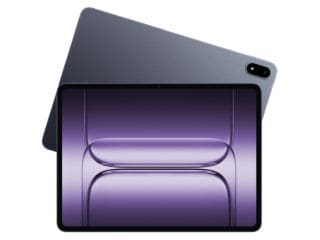- Home
- Science
- Science News
- China to Launch 'Core Module' for Space Station Around 2018
China to Launch 'Core Module' for Space Station Around 2018

Advancing China's space programme is a priority for Beijing, with President Xi Jinping calling for the country to establish itself as a space power, and apart from its civilian ambitions Beijing has tested anti-satellite missiles.
China insists its space programme is for peaceful purposes, but the US Defense Department has highlighted its increasing space capabilities, saying it was pursuing activities aimed to prevent adversaries from using space-based assets in a crisis.
The "core module" for the space station would be called the "Tianhe-1", the Chinese word for galaxy or Milky Way, Wang Zhongyang, spokesman for the China Aerospace Science and Technology Corp, told Xinhua.
"Two space labs will be launched later and dock with the core module, Tianhe-1," he said. "The construction of the space station is expected to finish in 2022."
It gave no details of what the "core module" would consist.
"If the International Space Station, which has extended its service, is retired by 2024, China's new space station will be the only operational one in outer space," Wang added.
In a manned space mission in 2013, three Chinese astronauts spent 15 days in orbit and docked with an experimental space laboratory, the Tiangong (Heavenly Palace) 1.
This year, China will launch the Tiangong 2 and Shenzhou 11 spacecraft, which will carry two astronauts and dock with Tiangong 2, Xinhua added.
Next year, China's first cargo ship, Tianzhou 1, will attempt to dock with Tiangong 2, it said.
China also plans a space telescope similar to the Hubble Space Telescope, which will "be on a separate space unit and share orbit alongside the space station", Wang added.
Xinhua, in a separate report, said China was also working on its own reusable rocket technologies and has already built a prototype model.
"The experiment has laid solid foundation for the realisation of reusable rockets in the country," an unnamed source told Xinhua.
China has been moving to develop its space programme for military, commercial and scientific purposes, but is still playing catch-up to established space powers the United States and Russia.
China's Jade Rabbit moon rover landed on the moon in late 2013 to great national fanfare, but soon began experiencing severe technical difficulties.
The Jade Rabbit and the Chang'e 3 probe that carried it there marked the first "soft landing" on the moon since 1976. Both the United States and the Soviet Union had accomplished the feat earlier.
© Thomson Reuters 2016
For the latest tech news and reviews, follow Gadgets 360 on X, Facebook, WhatsApp, Threads and Google News. For the latest videos on gadgets and tech, subscribe to our YouTube channel. If you want to know everything about top influencers, follow our in-house Who'sThat360 on Instagram and YouTube.
Related Stories
- Samsung Galaxy Unpacked 2025
- ChatGPT
- Redmi Note 14 Pro+
- iPhone 16
- Apple Vision Pro
- Oneplus 12
- OnePlus Nord CE 3 Lite 5G
- iPhone 13
- Xiaomi 14 Pro
- Oppo Find N3
- Tecno Spark Go (2023)
- Realme V30
- Best Phones Under 25000
- Samsung Galaxy S24 Series
- Cryptocurrency
- iQoo 12
- Samsung Galaxy S24 Ultra
- Giottus
- Samsung Galaxy Z Flip 5
- Apple 'Scary Fast'
- Housefull 5
- GoPro Hero 12 Black Review
- Invincible Season 2
- JioGlass
- HD Ready TV
- Laptop Under 50000
- Smartwatch Under 10000
- Latest Mobile Phones
- Compare Phones
- Vivo Y300 GT
- Samsung Galaxy F56 5G
- Realme C75 5G
- Lava Yuva Star 2
- Vivo Y19 5G
- iQOO Z10 Turbo Pro
- iQOO Z10 Turbo
- CMF by Nothing Phone 2 Pro
- Alienware 16X Aurora
- Alienware 16 Aurora
- Amazon Amazon Kindle Paperwhite (12th Gen)
- Lenovo Legion Y700 4th Gen
- boAt Storm Infinity Plus
- Moto Watch Fit
- Xiaomi QLED TV FX Pro (55-inch)
- Xiaomi QLED TV FX Pro
- Asus ROG Ally
- Nintendo Switch Lite
- Toshiba 1.8 Ton 5 Star Inverter Split AC (RAS-24TKCV5G-INZ / RAS-24TACV5G-INZ)
- Toshiba 1.5 Ton 5 Star Inverter Split AC (RAS-18PKCV2G-IN / RAS-18PACV2G-IN)

















